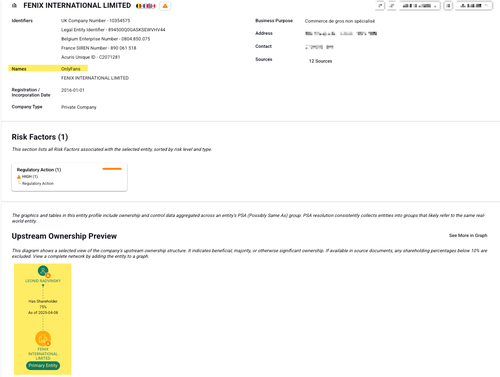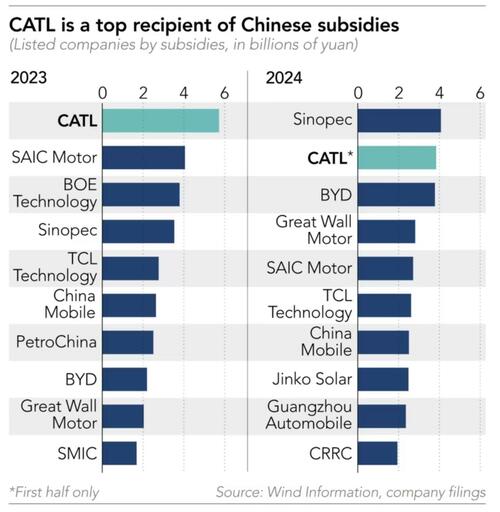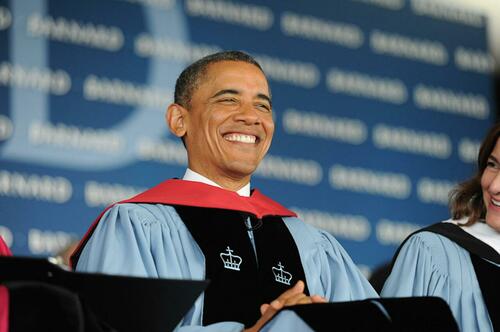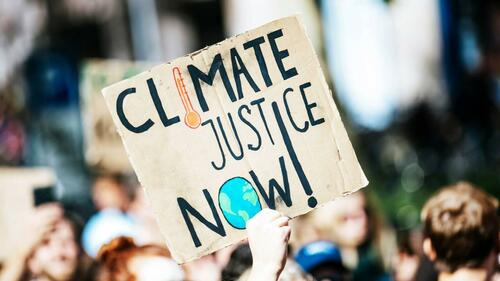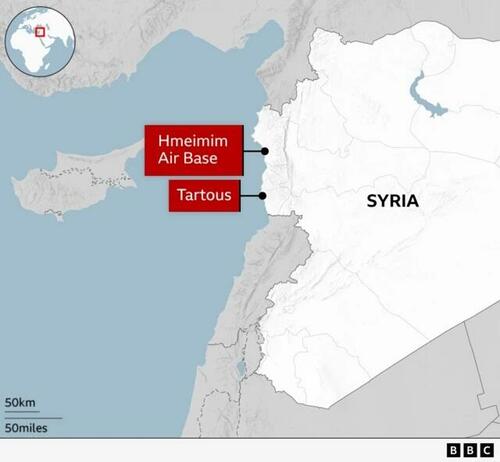Those who with God's help have welcomed Christ's call and freely responded to it are urged on by love of Christ to proclaim the Good News everywhere in the world.
Distinction Matter - Subscribed Feeds
-
Site: RT - News
The aftermath following an exchange of nukes could include “prolonged cooling, agricultural collapse and social upheaval,” a study has said
Apart from killing millions, a war between Russia and the US could result in a ‘nuclear winter’ that would devastate the Earth’s atmosphere and lead to a drastic reduction in agricultural production, a group of American scientists has said.
A team led by an assistant research professor at Pennsylvania State University, Yuning Shi, published the results of their stimulation of a war between the two largest nuclear powers in an article in Environmental Research Letters earlier this month.
According to the paper, “a global nuclear war” could see up to 150 million tons of soot released into the atmosphere, leading to “prolonged cooling, agricultural collapse, and social upheaval on an unprecedented scale.”
In such a scenario, precipitation and solar radiation would decrease by as much as 70% globally, resulting in the average air temperature dropping by over 15 degrees Celsius, it said.
Due to this ‘nuclear winter’, the annual production of maize, which the scientists focused on, could decrease by as much as 80%, the paper said.
Read more Rubio accuses Biden of being ‘irresponsible’ on Russia
Rubio accuses Biden of being ‘irresponsible’ on Russia
Supply chains and trade could also be seriously disrupted, further worsening the situation in the agricultural sector and leading to regional or global famine, the researchers stressed. According to their estimates, it would take from seven to 12 years to restore food production levels.
Understanding the possible damage from a nuclear exchange and preparing for it is “critical” given current geopolitical trends, including the Ukraine conflict, the tensions between India and Pakistan, and instability in the Middle East that have “undermined the fragile detente that prevailed during the last years of the Cold War,” the paper stressed.
Shi and his colleagues proposed to develop what they called ‘Agricultural Resilience Kits’ of region- and climate-specific seeds and technology packages to serve as a “buffer against uncertainty” in case of a ‘nuclear winter’.
Last month, Nikolay Patrushev, national security adviser to President Vladimir Putin, accused Western powers of “deploying their military machine against Russia and becoming delirious with nuclear apocalypse scenarios.”
READ MORE: Israel could strike Iranian nuclear facilities – CNN
Moscow has repeatedly denied claims by the US and EU of planning to use nuclear weapons during the Ukraine conflict. However, Russia updated its nuclear doctrine in 2023, allowing for the use of such arms as a deterrent to prevent aggression by hostile powers and military blocs that possess weapons of mass destruction or large arsenals of conventional weapons.
-
Site: PaulCraigRoberts.org
Professor Chossudovsky explains the failure of the 1945 Yalta Agreement
https://www.globalresearch.ca/america-made-great-again/5887858
-
Site: PaulCraigRoberts.org
Dear President Putin, There Is No Possibility of a Great Power Agreement
Foreign Affairs, May 23, 2025
Make Moscow Pay
The Case for Seizing Russian Assets to Fund Ukraine’s Defense
Russian foreign affairs commentators such as Fyodor Lukyanov are dreamers who have no idea of what is afoot: https://www.rt.com/russia/617970-lukyanov-trump-russia-ukraine/
Lukyanov should read what Trump policymakers are saying and stop reading tea leaves.
-
Site: RT - News
The US president said the new levy could enter into force due to trade imbalances with the bloc
US President Donald Trump has recommended a “straight 50% tariff” on the entire European Union, as the trade deficit with the bloc is around $240 billion annually, according to the US trade representative's office. He suggested that the new rate will start being applied on June 1.
Writing on his Truth Social account on Friday, Trump suggested that the EU was initially formed “for the primary purpose of taking advantage of the US on Trade,” and stated that the bloc has been “very difficult to deal with.”
He further claimed that the EU’s economic policies, taxes, regulations and “unfair and unjustified lawsuits against American companies” have led to a trade deficit with the EU of “more than $250,000,000 a year,” which he described as “totally unacceptable.”
It was later pointed out that the US president had cited the wrong figure, as the trade deficit with the EU is not $250 million, as Trump wrote, but rather around $240 billion, according to data from the US trade representative’s office.
“Our discussions with them are going nowhere! Therefore, I am recommending a straight 50% Tariff on the European Union, starting on June 1, 2025,” Trump announced, adding that there would be no tariff on products “built or manufactured in the United States.”
Read more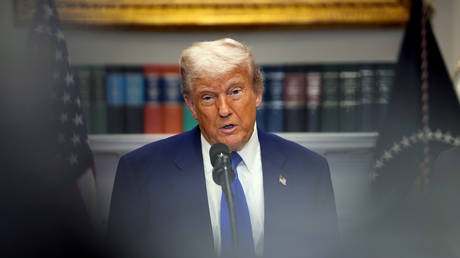 Trump ends tariff talks for most nations
Trump ends tariff talks for most nations
In April, Trump imposed a sweeping 20% tariff on all EU goods as well as a 25% tariff on all car imports and metals. However, he later suspended the 20% levy for 90 days, keeping only a 10% baseline tariff.
Last week, the US president stated that the EU had proven to be very difficult to deal with regarding trade practices, claiming that the bloc was “in many ways nastier than China.”
“They treated us very unfairly,” Trump said. “They sell us 13 million cars; we sell them none. They sell us their agricultural products; we sell them virtually none,” he claimed, vowing that Washington would “equalize” the situation and that “Europe is gonna have to pay a little bit more…. And America is gonna pay a lot less.”
Friday’s announcement comes as Trump has significantly revamped Washington’s tariff policies since returning to office in January, claiming that the entire world had supposedly been taking advantage of the US.
On April 2, which he dubbed “Liberation Day,” Trump imposed a baseline 10% tariff on all goods imported to the country as well as additional surcharges on countries such as China, Mexico and Canada, citing significant trade imbalances.
Shortly after the move, he suggested that the US would later negotiate individual deals with all US trade partners. However, earlier this month, he announced that Washington would set the terms unilaterally. He explained that “it’s not possible to meet the number of people that want to see us,” claiming that the US had received deal requests from some 150 countries.
The White House has not yet disclosed the terms of these deals or the exact rates that would be applied.
-
Site: PaulCraigRoberts.org
Hillary denounces Republican women as “handmaidens of the patriarchy.”
https://projectpatriot.com/feminism-vs-conservatism-did-hillary-go-too-far/
-
Site: PaulCraigRoberts.org
The Daily Caller reports that Trump did the Unthinkable–He defended white people
The leader of the free world hosted the president of the Republic of South Africa, Cyril Ramaphosa, as the United States plans to grant expedited refugee status to 59 white South Africans.
Afrikaners, a white minority group in South Africa, own the majority of the farmland in the country due to Apartheid-era laws, which have since been overturned. For years, the Afrikaners have spoken about having their farms raided or burned down and their people murdered and raped by black South Africans seeking vengeance. Ramaphosa signed a law in January allowing government seizure of farmland without compensation for purposes of equitable redistribution.
The South African majority party — along with U.S. Democrats and media outlets — has downplayed the racial targeting of white South Africans.
During Wednesday’s meeting, Trump asked his staff to dim the lights and proceeded to host a movie night with the South African president. He played a video comprised of clips of a South African minority party calling for the genocide of the Boers — a term referring to the minority whites in South Africa — and farmers as their supporters chanted along. A later clip showed a line of white crosses along a roadside that represent the lost lives of about a thousand white farmers.
After forcing Ramaphosa to watch the video, Trump sparred with NBC reporter Peter Alexander, who tried to change the subject to Qatari’s gifting of a jet to the president. Trump angrily shamed him for not wanting to talk about the plight of white South Africans. He held a stack of printed news articles about the vicious murders and attacks, holding up each one to the press as he described what happened to the story subjects.
“Death, death, horrible death,” he rattled off.
Trump then turned his ire to Ramaphosa, who condemned the chants heard in the video from the minority political party.
“What you saw, the speeches that were being made … one, that’s not government policy. We have a multiparty democracy in South Africa that allows people to express themselves, political parties, to various policies,” Ramaphosa said.
Trump was undeterred.
“But you do allow them to take land,” he said, adding, “When they take the land, they kill the white farmer, and when they do, nothing happens to them. Nothing happens to them.”
“How do you explain that?” Trump demanded to know.
CNN cut away from the video Trump played during the meeting and numerous mainstream media outlets called the claims of genocide “false,” insisting that the murders weren’t as widespread as Trump claimed. Their reaction was reminiscent of ABC News anchor Martha Raddatz telling Vice President J.D. Vance, “The incidents were limited to a handful of apartment complexes,” in response to migrant gang takeovers in Aurora, Colorado.
Nonetheless, it was an important moment of Trump standing up to foreign leadership. This administration has been very clear that they won’t tolerate being taken for a ride, especially on their home turf.
Trump also told off a dumbshit media whore: https://thepostmillennial.com/youre-a-disgrace-trump-blasts-nbc-reporter-for-asking-about-qatari-jet-during-meeting-on-white-persecution-in-south-africa
-
Site: PaulCraigRoberts.org
The FBI coverup of Epstein’s murder continues under Kash Patel
“Things have to change so they can remain the same.:
-
Site: PaulCraigRoberts.org
Are there any Democrat judges who are not actively anti-American?
-
Site: PaulCraigRoberts.org
Democrats appoint judges who are not ethnic Americans. They all work against Americans.
Here is the latest:
-
Site: PaulCraigRoberts.org
Satan’s Chosen People
Israeli doctor compared killing Palestinians in Gaza to ‘eliminating cockroaches’
-
Site: RT - News
Andrey Portnov was gunned down on Wednesday in an affluent suburb of the Spanish capital, in a suspected professional hit
A top court in the Madrid region has placed a secrecy order on an investigation into the killing of former Ukrainian lawmaker Andrey Portnov, according to local news reports.
No suspects have been arrested in connection with Wednesday’s shooting. Portnov, a seasoned politician who had fled Ukraine following allegations of treason, was gunned down on the street in an affluent suburb of the Spanish capital, in what local media speculates was a professional killing.
The Madrid Superior Court of Justice (TSJM), the highest judicial authority in the autonomous region, issued an order to restrict public access to case details on Thursday, EFE news agency and the newspaper 20 Minutos reported.
According to the latest media updates, Portnov was shot multiple times from behind by a lone gunman while standing at his Mercedes shortly after dropping his children to school in Pozuelo de Alarcon, a suburb of Madrid which ranks as one of the wealthiest municipalities in Spain.
Two accomplices reportedly assisted the assailant’s escape in a getaway vehicle.
Read more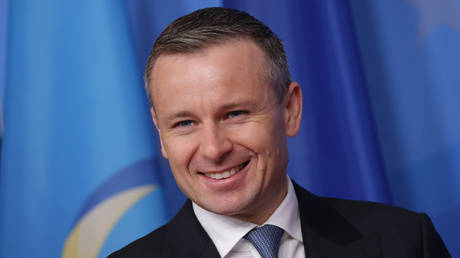 Ukraine wants fixed percentage of EU’s GDP
Ukraine wants fixed percentage of EU’s GDP
Portnov, a lawyer and long-time political figure who served as an MP in the late 2000s, served as a legal adviser to Ukrainian President Viktor Yanukovich, before he was ousted in a Western-backed armed coup in 2014. Portnov fled his country but returned in 2019 following the election of Vladimir Zelensky on a mandate to reintegrate Ukraine’s Russian-speaking regions.
Known for offering legal defense to individuals he claimed were politically persecuted, Portnov frequently appeared on Ukraine’s opposition media. While he initially supported Zelensky’s presidential bid, he later became a vocal critic as the new administration cracked down on opposition figures and media it labeled “pro-Russian.”
Portnov reportedly left Ukraine again in July 2022 and the next year transferred some assets to his children via a notary in Madrid, signaling that he had settled in Spain.
Rodion Miroshnik, Russia’s ambassador-at-large overseeing a special mission on alleged Ukrainian war crimes, has suggested that Portnov’s career gave him access to legal documents that could be damaging to people in Zelensky’s inner circle and that he may have been targeted to prevent the possible disclosure of such materials.
-
Site: Zero HedgeIraq Seals Major Oil Deal With Chinese CompanyTyler Durden Fri, 05/23/2025 - 07:45
By Irina Slav of OilPrice.com
Iraq’s government has signed a deal with Chinese Geo-Jade Petroleum to expand production at the Tuba oil field, build a refinery and two power plants.
Per an AFP report, the deal will also involve the construction of a petrochemicals facility and a fertilizer plant. The refinery that Geo-Jade Petroleum will build will have a capacity of 200,000 barrels daily. One of the power plants will have a capacity of 650 MW and the other, a solar power facility, will have a capacity of 400 MW.
“These projects with Geo-Jade represent a big leap in the development of Iraq’s oil wealth and supporting of the national economy,” Iraq’s oil minister, Hayan Abdel Ghani, said, adding that the deal would create thousands of jobs.
Geo-Jade Petroleum already operates in Iraq – it is in charge of the Khana field, which is slated to begin expanded production in 2026.
Chinese companies as a whole have built a solid presence in OPC’s number-two, driven by Beijing’s strategy to expand supply availability through both domestic and international investments. To date, more than a third of Iraq’s proven oil and gas reserves and as much as 66% of production are under the management of Chinese firms, Simon Watkins reported earlier this year.
The Iraqi government’s ambition to boost production significantly, to as much as 7 million bpd, Chinese companies are among the best placed to take advantage of the opportunity. Currently, Iraq produces around 4 million barrels daily—above its OPEC+ production quota, which has created tensions with OPEC’s number-one, Saudi Arabia.
Chinese companies’ entry into Iraq’s oil and gas sector is a result of an agreement inked back in 2019 and dubbed “Oil for Reconstruction and Investment”, under which Chinese companies are granted entry into Iraq’s energy infrastructure sector as investors in return for oil supplies.
-
Site: Zero HedgeFenix International Reportedly Exploring $8 Billion Sale Of OnlyFansTyler Durden Fri, 05/23/2025 - 07:20
OnlyFans' parent company, Fenix International Ltd., is in talks to sell the porn-driven platform, built for creators, to a U.S.-based investor group at a potential valuation of around $8 billion, according to Reuters, citing three sources familiar with the matter.
The sources said the group is led by Forest Road Company, a Los Angeles-based investment firm. They noted that Forest Road executives explored taking OnlyFans public via an SPAC in 2022.
The sources noted that other potential buyers have been discussing an OnlyFans acquisition with Fenix, though no additional details were provided about their identities. They added that a deal could be reached within weeks.
Here's more from Reuters:
The London-based company has drawn interest from several suitors in recent months.
Talks have been held at least since March, the people said. Three sources said a deal could be reached in the next week or two. The sources also cautioned that there was no certainty a deal will be struck and requested anonymity ahead of an official announcement.
According to publicly available data, Ukrainian American Leonid Radvinsky owns Fenix.
British filings showed that Radvinsky had paid himself at least $1 billion in dividends since buying OnlyFans in 2018.
OnlyFans surged in popularity during the Covid pandemic by allowing adult content creators to monetize their subscribers, reported $6.6 billion in revenue for the year ending November 2023—up from $375 million in 2020. Radvinsky's company takes about a 20% cut of creators' earnings.
Reuters noted, "Porn makes OnlyFans untouchable for many big banks and investors ... because due diligence might find illegal content such as child sexual abuse material, trafficking victims and nonconsensual porn."
-
Site: Mises InstituteBiden's hidden illness, Trump's surprise foreign-policy pivot, and America's bond meltdown. Don't miss the inaugural episode of the Power & Market Podcast, a weekly news recap
-
Site: Mises InstituteFor this week‘s version of Friday Philosophy, Dr. David Gordon reviews Mary Grabar‘s Debunking FDR, which examines Roosevelt‘s paternalistic worldview and how it shaped his political life and his presidency.
-
Site: Novus Motus LiturgicusLost in Translation #126After praying the Suscipe Sancta Trinitas, the priest kisses the altar and turns clockwise towards the people, saying Orate fratres while opening and closing his hands. He completes the prayer as he continues his clockwise movement, finishing both at the same time. When he is done, the prayer Suscipiat is said. The Orate fratres is: Oráte, fratres, ut meum ac vestrum Michael P. Foleyhttp://www.blogger.com/profile/02649905848645336033noreply@blogger.com0
-
Site: Zero HedgeCATL Received More Chinese Subsidies In 6 Months Than BYD, Great Wall And SAIC Did All YearTyler Durden Fri, 05/23/2025 - 06:55
China’s top EV battery maker CATL did not disclose how much it received in state subsidies in its latest full-year report—just before raising $5.3 billion in a secondary share listing in Hong Kong this week.
Previously, CATL had reported this data in line with mainland Chinese disclosure rules. Listed in Shenzhen since 2018, the company became dual-listed in Hong Kong on Tuesday, according to Nikkei Asia.
The most recent subsidy figure available is from the first half of 2024: 3.84 billion yuan ($532 million)—the highest among all A-share companies during that period. Despite not reporting second-half subsidies, this was still the second-largest full-year subsidy total, behind only Sinopec (4.06 billion yuan).
Nikkei Asia writes that CATL received more in the first half of 2024 than BYD, Great Wall Motors, and SAIC Motor did for the entire year. It was also the top subsidy recipient in 2023.
These figures come from Wind data and were verified by Nikkei Asia through company filings.
CATL’s reports categorize subsidies under “other income,” specifically “government subsidies.” In interim reports, the amounts match exactly—3.84 billion yuan in 2024 and 2.85 billion in 2023. In its full-year 2023 report, “other income” totaled 6.26 billion yuan, with 5.72 billion attributed to subsidies.
In 2024, “other income” rose 59% to 9.96 billion yuan, but without a breakdown, suggesting additional undisclosed subsidies in the second half of the year.
CATL declined to comment to Nikkei Asia about the missing figures or the change in disclosure. Executives, including Chairman Robin Zeng Yuqun, took no questions at the Hong Kong listing ceremony—a growing trend among mainland firms listing there.
Grant Thornton, CATL’s auditor since 2018, also did not respond to Nikkei Asia. In a press release, it said it helped CATL “navigate complexity” between Shenzhen and Hong Kong regulations, adding: “Grant Thornton China delivered tailored solutions, including financial statement audits.”
Beyond CATL, the list of top subsidy recipients reflects Beijing’s strategic priorities. While state oil giants Sinopec and PetroChina lead for energy security reasons, the inclusion of EV players like BYD, Great Wall, SAIC, and GAC signals strong government support for the electric vehicle industry.
-
Site: AsiaNews.itEven during military operations against Pakistan-administered Kashmir, false reports had already begun to circulate in India. But the repressive measures have continued even after the violence subsided. The government has shut down thousands of accounts and banned Pakistani media. A university professor has been jailed over a critical post, and at least 11 citizens have been arrested on charges of espionage.
-
Site: AsiaNews.itWith China's demographic crisis deepening, local authorities are ramping up subsidies and even sending mass text messages to promote marriage and family planning among young people. Yet results remain poor: in the first three months of 2025, marriages dropped by a further 8%. Rather than turning to government-backed dating apps and websites, young single Chinese prefer using video chats to find a potential partner.
-
Site: Mises InstituteMMT uses chartalism and a few dubious examples to appeal to history to establish the theory‘s authority and validity, only to discard this element as irrelevant and unnecessary.
-
Site: Mises Institute
-
Site: Catholic ConclaveSister Tiziana Merletti Secretary of the Dicastery for Religious.Sister Tiziana Merletti has been appointed secretary of the Dicastery for Religious, currently led by another woman, Sister Simona Brambilla, who was herself secretary of the curial body from October 2023 until last January, when she was promoted to prefect of the Dicastery and supported by Cardinal Ángel Fernández Artime, former Catholic Conclavehttp://www.blogger.com/profile/06227218883606585321noreply@blogger.com0
-
Site: Real Investment Advice
The short answer is that the Bank of Japan (BOJ) is letting the market set yields. For years, the BOJ has run an extremely loose monetary policy, including capping yields at extremely low levels and negative interest rates. Limited economic growth and disinflation made such a policy possible. However, inflationary pressures and a weak yen have prompted the BOJ to shift its stance. Policy normalization started in 2023, when the BOJ allowed 10-year JGB yields to rise above 1% for the first time in over a decade.
Today, 10-year and 30-year bond yields are 1.60% and 3.20%, respectively. They better reflect expectations of continued tighter monetary policy as inflation lingers above the BOJ’s 2% target. Moreover, the yen’s persistent weakness, exacerbated by low interest rates versus the U.S., forces the BOJ to encourage higher interest rates to stabilize the currency.
Japan’s improving economy and higher inflation lead many to anticipate that the BOJ may entirely abandon interest rate caps and negative interest rates. Additionally, with public debt exceeding 250% of GDP, concerns about long-term fiscal sustainability are percolating. Consequently, these factors add to the upward pressure on yields.
The risk to US and global stock and bond investors is that higher Japanese yields and a stronger yen force a reversal of the yen carry trade. If you recall, we saw what that may look like in August 2024.

What To Watch Today
Earnings
- No notable earnings reports
Economy

Market Trading Update
Yesterday, we discussed the back drop to bonds. We also added to our longer-duration bond holding in portfolios due to the deep oversold condition. However, there is a rather large, and glaring mistake, between the current narrative that "deficts" are causing yields to rise. The problem is that we have been running deficits for more than 40-years, and deficits today are lower than they were 5-years ago. But therein lies the key has to why rates are currently higher than they were in 2020.

As shown, correlation between deficits and rates makes sense. The reduction in the deficit since 2020 has been a function of stronger growth and less debt issuance. As deficits decline, and economic growth strengthens borrowers are able to ask for more yield. Conversely, when economic growth is declining sharply, and deficits increase due to increased debt issuance, yields fall. You can see this correlation in the chart below.

As discussed yesterday, in the short-term narratives drive yields along with massive short-positioning and NO central bank interventions. When the Federal Reserve and the Treasury begin to intervene to control the rise in yields, which they will to protect financial stability, the reversal in yields will be rather sharp. However, that could be months or quarters away.
In the mean time, we will have to take advantage of swings in the bond market to increase returns from our fixed income holdings. Currently, as shown, longer-duration bonds are deeply oversold and due for a reflexive rally. What causes that rally? Who knows, but some headline will emerge suggesting lower inflation or slower economic growth and yields will respond accordingly.
As shown, TLT is currently trading 3-standard deviations below the mean which suggest a rally to 88 (the mean) is possible which is a decent short-term trade setup.

In the mean time we get to clip a 4.5% coupon while we wait for a short-term gain.

The 20-Year Auction Was Not As Bad As Its Headlines
- The Terrifying Implications From Today's Dismal 20-Year Auction- Twitter/X
- The U.S. just held a 20-year Treasury bond auction, and it went terribly- Twitter/X
- 20-Year Treasury Auction Goes Badly - Barrons
Social and traditional media made Wednesday's 20-year auction out as one of the worst Treasury auctions ever. We, however, would categorize it as tepid. Let's review a few facts and let you make up your own mind.
For starters, the 20-year Treasury is an orphan bond of sorts. The demand and supply of 20-year bonds are not as large as the more liquid 2-year, 3-year, 5-year, 10-year, and 30-year bonds. As such, the reduced liquidity and smaller auction sizes tend to lead to more volatile auction results.
The Tweet of the Day shows that the "tail" on the auction was 1.2 bps. Thus, the auction rate was 1.2 bps higher than where it was trading prior to the auction. The graph shows that a +/- 1bps result is somewhat normal.
Consider that indirect bidders, predominantly central banks, took 88% of the auction. Direct bidders, the backstop for auctions, took a relatively low 8%. In other words, the auction did not need the largest banks to support it. The graph below shows that the direct bidder allotment was on the low side of recent auctions.
Indeed, the auction could have been better, but the media exaggerates the outcome to feed their current bearish bond narrative.

The Role of Bonds in a Well-Balanced Investment Portfolio
When building a strong and diversified portfolio, most investors focus heavily on stocks. But bonds play an equally important role—especially when it comes to managing risk and providing consistent income. Incorporating bonds into your investment portfolio can lead to more stable investment strategies and long-term financial resilience.
Whether you’re just beginning to invest or looking to rebalance your asset allocation, understanding how bonds work and how to use them effectively is key to building a well-rounded portfolio.
Tweet of the Day

“Want to achieve better long-term success in managing your portfolio? Here are our 15-trading rules for managing market risks.”
Please subscribe to the daily commentary to receive these updates every morning before the opening bell.
If you found this blog useful, please send it to someone else, share it on social media, or contact us to set up a meeting.
The post Why Are Yields Surging In Japan? appeared first on RIA.
-
Site: Zero HedgePutin Orders Army To Establish Big Border Buffer Zone Inside UkraineTyler Durden Fri, 05/23/2025 - 05:45
Russian President Vladimir Putin is revisiting a strategy first proclaimed last year, but which appeared to be thwarted or put on hold by Ukraine's Kursk invasion. But now with Kursk liberated from the over six-month Ukrainian troop occupation, Putin is talking a 'buffer zone' along the southern border once again.
Russian troops are seeking to carve out a large security buffer zone along the Russia-Ukraine border, Putin announced Thursday during a meeting with ministers and Kremlin officials. "We have approved the creation of a necessary security buffer zone along our borders. Our armed forces are actively working to accomplish this task," the Russian leader stated.
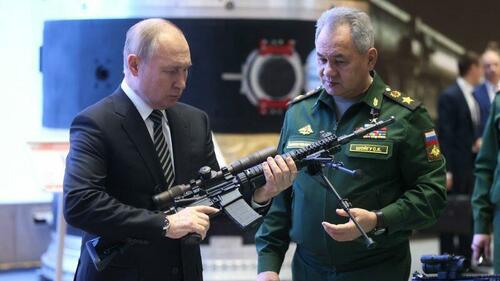 Kremlin.ru
Kremlin.ru
Putin is fresh off his in-person tour of Kursk region, which happened Tuesday, which was a first since the August cross-border invasion by Ukraine.
Yet the southern oblasts are still threatened by near-daily artillery and drone fire. A big part of the rationale for a buffer zone is for full stability to return to Russian border towns and villages, for example especially in Belgorod:
He emphasized that, given the recent developments in the Kursk, Belgorod, and Bryansk regions, immediate efforts are required to restore and rebuild areas affected by recent events. This includes assisting local residents in returning to their native villages, provided security conditions allow. Furthermore, it is essential to rehabilitate transportation networks and other infrastructure, ensure the smooth operation of industrial and agricultural enterprises, and support entrepreneurs and their employees.
This month alone has seen hundreds of drones launched from Ukraine onto southern oblasts, with some drones targeting as far as Moscow, which has resulted in commercial flight stoppages this week (not for the first time).
The timing of Putin's buffer zone plan is very significant, as President Trump is currently being widely perceived as 'stepping back' from pursuit of a final peace settlement.
"The enemy chooses targets that have no military significance. It targets ambulances, farm machinery, women and children. We have taken a decision to create a buffer zone along the border of the Kursk, Bryansk and Belgorod regions."
— Margarita Simonyan (@M_Simonyan) May 22, 2025
You didn't expect anything else, did you now. pic.twitter.com/t4natuRrqHThe NY Times is currently reporting that Trump is ready to throw his hands up in the air and say 'not my problem' as neither side is ready to compromise:
For months, President Trump has been threatening to simply walk away from the frustrating negotiations for a cease-fire between Russia and Ukraine.
After a phone call on Monday between Mr. Trump and President Vladimir V. Putin of Russia, that appears to be exactly what the American president is doing. The deeper question now is whether he is also abandoning America’s three-year-long project to support Ukraine, a nascent democracy that he has frequently blamed for being illegally invaded.
The Times concluded, "In a reversal, President Trump appears to have backed off joining a European push for new sanctions on Russia, seemingly eager to move on to doing business deals with it."
And yet, on Thursday, the Western allies are speaking loudly:
G7 FINANCE LEADERS SAYS IF A RUSSIA/UKRAINE CEASEFIRE IS NOT AGREED, THEY WILL CONTINUE TO EXPLORE ALL POSSIBLE OPTIONS, INCLUDING FURTHER RAMPING UP SANCTIONS - COMMUNIQUE
As for Putin, is he readying to expand operations in Ukraine? This buffer zone could mean new efforts of the Russian military to control chunks of Kharkov, Sumy, and Chernigov. Sumy next?
NEW | Russian President Vladimir Putin likely orchestrated a meeting with Kursk Oblast officials on May 20 to set conditions to justify the renewal of Russian plans to seize Sumy City and illegally annex Sumy Oblast. (1/9) pic.twitter.com/482IyJc2b7
— Critical Threats (@criticalthreats) May 22, 2025It was a mere day ago that Putin expressed the following in a joking fashion:
President Vladimir Putin appeared to make light of militarily seizing Ukraine’s Sumy region during a visit to Russia’s southwestern Kursk region, even as the Kremlin claims to be pursuing a negotiated end to the war.
The moment was captured on video published by the state-run news agency TASS, in which a local official from the Glushkovsky district near the border with Ukraine told Putin: “Sumy should be ours.”
“We cannot live like we’re on some kind of peninsula. There should be more of us [Russians]. At least in Sumy,” the official, Pavel Zolotarev, added. “With you as commander-in-chief, we’ll win.”
All of this makes Kiev and Europe extremely worried that Putin will have a freer hand, given Trump could be lowering the pressure on Moscow. The White House has thus far resisted ramping up sanctions, despite Europe's best lobbying efforts.
-
Site: Zero Hedge"Never Heard Of Him": Notable Columbia Prof Says He Isn't Sure Obama Attended Columbia UniversityTyler Durden Fri, 05/23/2025 - 05:45
By Oliver Darcy of Campus Reform
In a recent interview, a well-known professor who taught at Columbia University for 46 years questioned whether or not President Obama actually attended the Ivy League school.
Prominent Columbia professor Henry Graff says he isn’t sure President Obama ever attended the Ivy League school.
“I taught every significant politician that ever studied at Columbia,” said Columbia Emeritus Professor of History Henry Graff, in an interview last week with Wayne Root, a contributor at The Blaze. “Between American History and Diplomatic History, one way or another, they all had to come through my classes.”
“Not Obama,” he continued. “I never had a student with that name in any of my classes. I never met him, never saw him, never heard of him.”
Graff alleged that “none of the other Columbia professors knew him either” and said he is “very upset” to hear Obama referred to as a graduate of Columbia University.
“I am angry when I hear Obama called ‘the first President of the United States from Columbia University,’” he said. “I don’t consider him a Columbia student. I have no idea what he did on the Columbia campus. No one knows him.”
Graff is the recipient of the Kaul Foundation Award of Excellence in the field of education, an honor that is tied to a prize of $100,000. He is the author of multiple books and is known for teaching the first course on the history of the Presidency.
-
Site: Real Investment Advice
Market perspective is essential in avoiding investing mistakes. With the media constantly pushing a “Markets In Turmoil” narrative, it’s no wonder that investor sentiment recently reached some of the lowest levels since the financial crisis. The following chart is the z-score of the retail and professional investor sentiment composite index of bullish sentiment.

Notably, we are in one of the longest stretches of more extreme bearish sentiment outside structural bear markets. (Read "Death Crosses And Market Bottoms" for more detail and an explanation of the difference between event-driven corrections and structural bear markets.)

Of course, given the recent market decline and the surge in "bearish" media-driven narratives, it is unsurprising that bearish sentiment has risen. However, this is where investors start making mistakes in their investment process.
As noted, we are in one of the most extended stretches of bearish sentiment outside a structural bear market. The difference between event-driven corrections and structural bear markets is crucial to understand. However, extremely negative investor sentiment and positioning are the hallmarks of the end of corrections and bear markets. To wit:
In other words, historically speaking, the death cross, more often than not, is a potential contrarian indicator. The difference between whether the death cross is a shorter-term corrective process or a larger “bear market” decline depends mainly on whether the cause of the market decline is “event-driven” or “structural.” This context is important when examining the current decline and triggering of the “death cross.” The chart below shows the difference in the length of “event-driven” versus “structural” corrections, signified by the triggering of the “death cross.” The dot.com and financial crisis periods were structural events, as significant corporate failures and credit-market dislocations occurred amid deep economic contractions. However, outside of those two significant structural impacts, all other “events” were short-lived, and markets soon recovered."

This is because when sentiment is the most bearish and the markets trigger longer-term sell signals, much of the selling has already been exhausted. Nonetheless, now that we are constantly connected to financial media, we are inundated with headlines designed to get “clicks” more than delivering real news. “Investor Resolutions For 2025” noted that investor psychology is the most significant driver of investing failure over time. This cycle of human emotions is continually repeated through investment cycles.

While many behavioral biases significantly negatively impact investor outcomes, from herding to loss avoidance to confirmation bias, "anchoring" is one of the most important.

The Anchoring Problem
“Anchoring is a heuristic revealed by behavioral finance that describes the subconscious use of irrelevant information, such as the purchase price of a security, as a fixed reference point (or anchor) for making subsequent decisions about that security.” – Investopedia
“Anchoring,” also known as the “relativity trap,” is the tendency to compare our current situation within the scope of our limited experiences. For example, I would be willing to bet that you could tell me exactly what you paid for your first home and what you eventually sold it for. However, can you tell me exactly what you paid for your first soap bar, hamburger, or pair of shoes? Probably not.
The reason is that the home purchase was a major “life” event. Therefore, we attach particular significance to that event and remember it vividly. If there was a gain between the purchase and sale price of the home, it was a positive event, and therefore, we assume that the next home purchase will have a similar result. We are mentally “anchored” to that event and base our future decisions around very limited data.
Today, investors are trained by the financial media to “anchor” to a fixed point in the market. Such is why investors consistently measure performance, relative to the market, from January 1st to December 31st. Or, worse, we measure performance from the peak of an advance. For example:
- The market is up 140% from the March 2020 lows.
- The market is down 10% from the 2025 peak.
- Or, the market is down 6% for the year.
The problem is that most investors did not buy the 2020 bottom or sell the 2022 peak. However, one of the most significant forms of anchoring is portfolio "high water marks." The high water mark is the peak value of an investor's portfolio over a given time frame. For example, at the market's peak in 2025, an investor had a portfolio value of $1,000,000. During the recent market correction, the portfolio value declined to $950,000. While that $50,000 loss is significant and is certainly concerning for that investor, it must be put into the context of what is happening in the markets.
- First, before the correction that started in February, the market had rallied nearly 5%. Therefore, our example investor started the year with a portfolio value of roughly $960,000 that grew to $1,000,000.
- Secondly, while the $50,000 decline is significant, the investor is "anchored" to the portfolio's high-water mark.
- As noted above, the market is down 6% for the year, but the investor is at roughly the same level as he started this year.
- In other words, the portfolio return is roughly a loss of 1% versus a market decline of 6%.
Yes, a decline of $50,000 is significant, but these “anchor” points provide little perspective for the average investor regarding their relative position to their financial goals. However, these “anchors,” tied to constant media updates, feed our emotional decision-making processes driven by “greed” or “fear.”
Let’s take a look at an example:
As of Friday’s close, the market is down 10% from its all-time high.

As we warned about several times in 2024 and early this year, when a 10% correction eventually came, it would “feel” worse than it was because of the long period of low volatility.
Yes, it feels terrible. However, investors are now focusing on that “high-water mark.”
But this is the goal of the Wall Street marketing machine. Getting you to focus on current gains or losses creates a “sense of urgency” for you to do something. Why?
“Money in motion creates fees and revenue for Wall Street.”
Therefore, pushing you to take action may not necessarily be “profitable” for you, but it IS profitable for Wall Street.
Changing Your Anchor Point
To reduce your “emotional action button,” step back and change your “anchor” point.
If your portfolio is down 10% from the recent peak, ask yourself two questions:
- Am I losing money? Or,
- Is my portfolio still aligned with my investing goals?
If my goal is to average a 6% annualized return, where am I today relative to that goal? The issue of using the “high-water mark” as the “anchor” is that it resets psychologically to measure our performance from that level. Therefore, we should look back at where we were on a trailing one-year basis. If our goal was 6% a year, we almost doubled that goal over the last 12 months. All of a sudden, the recent decline doesn't seem as significant.

However, let's assume an investor was unlucky enough to have bought the market's peak before the pandemic's onset. Despite the pandemic shutdown, surging inflation, fears of recession, the Russia/Ukraine war, and every negative headline, the portfolio is still 63% higher. In other words, the portfolio has an annualized return of roughly 12%, double what was required to meet the needed financial goals.

The point here is that where you choose to “anchor” your analysis will significantly affect your emotional psychology when managing your money.
Yes, there has been a lot of volatility this year, but if I "anchor" my view to a longer-term time frame, the recent volatility is much less concerning.
Market perspective is essential.

Stick To Your Process
Does this mean you shouldn’t pay attention to your money or take action when things go wrong? Of course, not.
With the media fueling our fears 24/7, from “Fear Of Missing Out” to “Fear Of Losing It All,” it is difficult not to let our emotions get the better of us. However, “anchoring” our market perspective to a previous high-water mark or portfolio dollar value exacerbates our fragile emotional states.
In the “heat of the moment,” it is easy to get caught up in the emotional pull of markets and portfolio valuation changes. This past weekend's #BullBearReport discussed the requirement of being more like Dr. Spock from Star Trek when managing your money.
“If I ask you what’s the risk in investing, you would answer the risk of losing money.
But there actually are two risks in investing: One is to lose money, and the other is to miss an opportunity. You can eliminate either one, but you can’t eliminate both at the same time. So the question is how you’re going to position yourself versus these two risks: straight down the middle, more aggressive or more defensive.
How do you avoid getting trapped by the devil? I’ve been in this business for over forty-five years now, so I’ve had a lot of experience.
In addition, I am not a very emotional person.In fact, almost all the great investors I know are unemotional. If you’re emotional then you’ll buy at the top when everybody is euphoric and prices are high. Also, you’ll sell at the bottom when everybody is depressed and prices are low. You’ll be like everybody else and you will always do the wrong thing at the extremes.” - Howard Marks
We all make “bad choices,” and we need guidelines to maintain our market perspective.
A sizable contingent of investors and advisors has never experienced a real bear market. After a decade-long bull market cycle fueled by central bank liquidity, mainstream analysis believes the markets can only go higher. What has always been a concern to us is the rather cavalier attitude toward risk that the media promotes.
“Sure, a correction will eventually come, but that is just part of the deal.”
What gets lost during bull cycles, and is always found most brutally, is the devastation caused to wealth during inevitable declines.
Therefore, it remains essential to follow your investment discipline. If you don’t have a process, here are the guidelines we follow during tough markets.
7-Rules To Follow
- Move slowly. There is no rush to make dramatic changes. Doing anything in a moment of “panic” tends to be the wrong thing.
- If you are overweight equities, DO NOT try to fully adjust your portfolio to your target allocation in one move. Again, after big declines, individuals feel like they “must” do something. Think logically above where you want to be and use the rally to adjust to that level.
- Begin by selling laggards and losers. These positions were dragging on performance as the market rose and they led on the way down.
- If you need risk exposure, add to sectors or positions performing with or outperforming the broader market.
- Move “stop-loss” levels up to recent lows for each position. Managing a portfolio without “stop-loss” levels is like driving with your eyes closed.
- Be prepared to sell into the rally and reduce overall portfolio risk. You will sell many positions at a loss simply because you overpaid for them to begin with. Selling at a loss DOES NOT make you a loser. It just means you made a mistake. Sell it, and move on with managing your portfolio. Not every trade will always be a winner. But keeping a loser will make you a loser of capital and opportunity.
- If none of this makes sense to you, please consider hiring someone to manage your portfolio for you. It will be worth the additional expense over the long term.
Keep your market perspective in check, avoid anchoring, and focus on your investment goals rather than market volatility.
I hope this helps.
The post The Anchoring Problem And How To Solve It appeared first on RIA.
-
Site: RT - News
Lawmakers claim Hungary is undermining EU values with its policies
Over 20 members of the European Parliament have urged the European Commission to immediately freeze all EU funding to Hungary as a means of putting pressure on Prime Minister Viktor Orban’s government. The demand comes as the bloc’s foreign ministers prepare to weigh potential sanctions, including a suspension of Budapest’s voting rights.
In a letter sent Tuesday to Budget Commissioner Piotr Serafin and Justice Commissioner Michael McGrath, 26 MEPs accused Hungary of “violating EU values and EU laws.” They cited four specific actions, including a March law that effectively bans pride parades in Hungary, a move consistent with Orban’s rejection of “LGBT ideology.”
The lawmakers also blasted proposed Hungarian legislation that would tighten oversight of political organizations receiving foreign funding, which critics argue would suppress “civil society.”
The MEPs alleged that Budapest’s policies indicate that all EU funding for Hungary risks being misused and that a full freeze would be “proportionate” under the circumstances.
Read more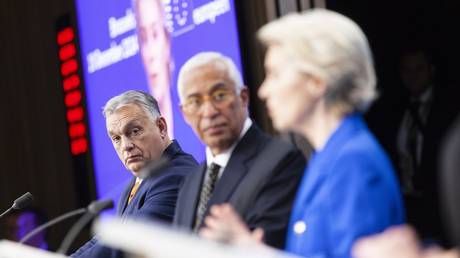 Brussels seeks to sideline Hungary on Russia sanctions renewal – FT
Brussels seeks to sideline Hungary on Russia sanctions renewal – FT
Hungarian MEP Csaba Domotor pushed back against the accusations, arguing that the targeted organizations serve foreign interests with grants they receive from the EU, George Soros’ Open Society Foundation, and the recently defunded US Agency for International Development (USAID).
Hungary has repeatedly faced EU criticism for its conservative social policies, which don’t align with the bloc’s pro-LGBT agenda, and regulations requiring more transparency from foreign-funded organizations.
Budapest has also clashed with Brussels over support for Kiev and anti-Russian sanctions. Orban has warned that admitting Ukraine into the European Union risks drawing the bloc into the ongoing military conflict and called the European Commission’s plans to end all imports of Russian energy by the end of 2027 “absolute insanity.”
Hungarian Foreign Minister Peter Szijjarto has said that such a move would sharply increase energy prices across the EU, seriously undermine member states’ national sovereignty, and harm European businesses.
Some EU officials, including Estonian Foreign Minister Margus Tsahkna, have advocated for stronger action, such as triggering Article 7 of the EU Treaty to strip Hungary of its voting rights. Relevant proceedings against Hungary were launched in 2018.
READ MORE: Ukraine wants fixed percentage of EU’s GDP
The EU’s General Affairs Council, which is comprised of foreign and European affairs ministers from member states, is scheduled to discuss Hungary’s Article 7 case for the eighth time next Tuesday, according to the official agenda.
-
Site: AsiaNews.itSeveral of the country's major business groups have formed a network to promote the idea that collaboration is more productive than competition, and they are now working together to find common paths to strengthen the national economy. Their efforts begin with social projects such as supporting low-income families, schools, and student hostels.
-
Site: Crisis Magazine

The Francists are playing defense now, fighting a rear-guard action against those who have questioned certain actions, thoughts, and even “teachings” of Pope Francis. There is an odor of desperation among them. After all, we have had a sometimes rocky 12 years. The Francists know this, though they would put all the blame on Taylor Marshall. Over the length of his papacy, those with even a slight…
-
Site: Crisis Magazine

On May 18, 2025, the news broke that Joseph Robinette Biden Jr., the 46th president of the United States and one of the most recognizable Catholic figures in modern American political life, was diagnosed with advanced, metastatic prostate cancer. The cancer, classified with a Gleason score of 9—aggressive and spreading to his bones—is no trivial diagnosis. Though still hormone-sensitive and…
-
Site: LES FEMMES - THE TRUTH
-
Site: Zero HedgeIdeological Capture At Professional SocietiesTyler Durden Fri, 05/23/2025 - 05:00
Disassembling and “deleting” federal agencies is proving to be a difficult task for the Trump administration, which has been working to slash bureaucratic red tape and federal spending, especially for left-wing radicalism like Diversity, Equity, and Inclusion (DEI).
Unlike some of the intermediate steps President Trump has taken through Executive Order, truly closing an agency will require a 60-person majority in a Senate vote, a tall order with only 53 Republicans in the upper chamber.
But there are still some low-hanging fruits left for the administration to pick. Chiefly, it can end relationships with all professional societies promoting principles of DEI and radical gender ideology.
The federal government contracts with a myriad of these organizations across all the major agencies. Professional societies set the atmosphere and guidelines for practitioners in their fields, and they can have hundreds of thousands of members.
If those organizations become ideologically captured, the impact will be felt across society.
There is no reason for the federal government to fund such organizations. DOGE should identify these organizations and give Congress and taxpayers the information they need to make informed budget decisions.
Doing so will allow state and local governments to make better decisions as well.
As DOGE continues the work of identifying bloat, some of those activities and decisions will shift to state and local government where they rightly belong. But elected officials will still be presented with the same outside groups seeking their business. Officials at the state and local level, and taxpayers who fund those entities, have the right to know more about organizations seeking public funds.
The following are just a handful of examples of professional societies that have become ideologically captured:
SHAPE America
The Society of Health and Physical Educators (SHAPE) America is a professional organization representing over 200,000 physical education teachers.
Federal spending since 2020: Over $2.5 million
$2.52 million from CDC, $82,245 from the DoDEAThe Department of Defense Education Activity (DoDEA), which runs the Pentagon’s K-12 school system for the children of servicemembers worldwide, contracts with SHAPE to provide training to their teachers. SHAPE creates learning standards for instructors to teach to, such as the 2021 National Sex Education Standards, promoted on its website.
These standards are currently featured on the CDC website.
They include goals like:
-
By 2nd grade, define gender identity
-
By 5th grade children should be able to describe the role of puberty blockers on those who identify as transgender. Fifth graders should differentiate between sexual orientation and gender identity and explain that gender expression and gender identity exist along a spectrum
-
By 8th grade define anal sex and describe “pregnancy options” including abortion.
Gender Spectrum, a nonprofit organization that promotes the concept of “neogenders,” whereby students can “identify” their “gender" as animals, objects, and mental health disorders, also consulted on these standards.
During a 2021 DoDEA presentation on implementing SHAPE standards, a DoDEA teacher articulated the extremist ideology inculcated by SHAPE, writing in presentation materials that talking about “heterosexuality as the ‘norm’” somehow “causes conflict.”
Before the Trump administration issued its executive order on gender ideology, SHAPE promoted the anti-science stance that women and men are biologically equal.
(READ THE EO: Defending women from Gender Ideology Extremism and Restoring Biological Truth to the Federal Government)
The SHAPE website included the claim that “even though young people who have gone through a male puberty are taller and stronger than most young people who have gone through a female puberty, it is important to acknowledge that not all boys are stronger, taller, faster or more athletically talented than all girls.” The website also included support for the use of harmful puberty blockers to “neutraliz[e]” that valid concern.
Science is clear: with extremely rare exceptions, males are categorically stronger and faster than females.
The neo-Marxist concept of “equity” is also a fundamental principle at SHAPE. Indeed, the Centers for Disease Control is currently contracting with SHAPE to “engage school administrators as champions to advance healthy schools through equitable and inclusive programs, policies, and practices” in support of the CDC’s “Whole School, Whole Community, Whole Child” framework for addressing health in schools.
North American Association for Environmental Education
A professional organization representing about 20,000 members, typically in the education field.
Federal spending since 2020: $15.7 million
$8.8 million from EPA, $4.7 from Commerce, $1.7 from Department of Agriculture, and $505,500 from the Department of the InteriorPresident Trump’s Executive Order on Ending Illegal Discrimination and Restoring Merit-Based Opportunity prohibited DEI practices for federal contractors. Before this order was given, the NAAEE website was replete with “Justice, Equity, Diversity, and Inclusion” (JEDI) content. Teachers were recommended resources like “Teaching About Race, Racism, and Police Violence” by the Southern Poverty Law Center, “Your Kids Aren’t Too Young to Talk About Race,” and “A Guide to Gender Identity Terms.”
While the website is seemingly getting scrubbed of DEI verbiage, some remnants remain. NAAEE announced the addition of five new board members in 2021, stating their credentials would help “push for social justice and center equity in all that we do.” Two are still on the board.
The organization houses a Coalition for Climate Education Policy’s steering committee, whose governance documents state that members agree to “always consider equity and justice in our collective work.”
The costliest NAAEE program funded by the federal government is the ee360+ initiative, which supports “a cadre of environmental education leaders to increase environmental literacy for everyone, everywhere.” These education leaders are assisted by federal and state institutions and nonprofits to disseminate NAAEE’s “Environmental Education Guidelines.”
"Decoding Whiteness” educator training provided by NAAEE
The NAAEE Guidelines push left-wing concepts of “environmental justice” and “equity,” and fuse environmental education with “civic engagement.” In other words, students are made to develop a “critical perspective” by fixating on their own and others’ race, “gender identity,” national origin, and socio-economic status. Then, they are asked to advocate for policies taking their new critical perspective into consideration.
While environmental education sounds nice, children are not learning about tadpoles and butterflies. Through NAAEE the federal government is funding left-wing advocacy and woke identity politics in classrooms nation-wide.
IMAGE: Highlights from the Environmental Education Programs Guidelines for Excellence Part 4
National Council for History Education
A 501c3 nonprofit professional society for history educators. The organization does not disclose the number of its members.
The federal checkbook USASpending indicates that federal spending since 2020 is $1.3 million, however these figures are undercounted.
NCHE’s tax documents show that from June 2023-June 2024 the organization received $2.4 million in federal tax dollars between the Department of Education, National Endowment for the Humanities, and the Library of Congress.
Between 2019 and 2021 NCHE received $1,474,657 in American History and Civics grants from the Department of Education. The grants were to develop a “Learning and Exploring American Democracy” (LEAD) project. NCHE was also awarded two other American History and Civics grants in 2023, worth over $2.5 million each, disbursed over five years. While these grants show up on the Department of Education website and on the NCHE tax documents, they are not represented on the federal checkbook, highlighting issues with reporting on USASpending.
By examining some of the NCHE activities funded by these grants, we can get an idea of how the organization is putting its taxpayer dollars to use.
LEAD is intended to provide history and civics-related resources for teachers to incorporate into their lessons. Part of this program includes at least one “Equity Summit,” which, along with select other webinars offered by the program, raise questions about the history and civics lessons the federal government is funding for American children.
The keynote speaker for the 2020 Equity Summit, Hasan Jeffries advocated for the removal of historical monuments, even of Christopher Columbus in his hometown of Columbus, Ohio:
“So here in Columbus, Ohio there have been moves and movements with some success to remove statues of Christopher Columbus for example, so we're not just talking about Confederate soldiers and monuments to them, we're talking about all of these figures, all of these memorials that commemorate—that celebrate rather—white supremacy. And so the Black Lives Matter protests are very much about the past as well.”
Jeffries goes on to say that racism is foundational to the American nation:
“In fact, racism is very much encoded in our DNA. Racism and capitalism together are really that double helix of our DNA; they are intertwined, they have been with us from the beginning. They are encoded in our society. They are encoded in our person.”
Other presentations include the radical left-wing Southern Poverty Law Center’s Teaching Hard History program, which provides materials and advice for teachers to engage in the topic of American slavery.
During the talk, speaker Kate Shuster suggested students are complicit in slavery unless they take steps to “redress inequalities:”
“We need to make it clear to students when we teach about slavery that the question is not ‘are they guilty of the crime of enslaving people?’ The question is ‘How are they going to move forward to redress the inequalities that are left over from the abolition of slavery?’ So, complicity can exist without the act of owning slaves, but people don't like to be told that they're complicit.”
Shuster was invited back for another presentation on the same topic for a LEAD program webinar in 2021. That video is not available.
Another Equity Summit was held in 2024, this one kicking off with a “land acknowledgment.” NCHE Executive Director Jessica Ellison displayed a “You are on Dakota/Ojibwe Land” poster behind her.
The irony of an organization -- primarily funded by the U.S. government-- denying the sovereignty of the United States is evidently lost on Ellison.
Jessica Ellison, who became NCHE Executive Director in 2023, recommended the controversial book White Fragility to teachers in June 2020.
Other recent activity includes telling teachers how to fight back against “book bans” of divisive, pornographic content in school libraries
Unfathomably, in the age of DOGE, NCHE received a new grant through the Library of Congress in April 2025. Through this grant, NCHE will direct the Library’s regional granting entity in the Great Plains region, deciding which other organizations in the area can access taxpayer funding.
CONCLUSION
As of May 2, DOGE has claimed an estimated $160 billion in savings for taxpayers. We’re working to verify this total, but more must be done to broaden the impact of their critically important work. All of the organizations profiled here have ongoing grants that have not been cut by DOGE. These organizations have proven to be incredibly effective at spreading their ideas throughout society.
As DOGE finds efficiencies and cuts waste agency by agency, auditors must identify grantees trafficking in radical politics and share their findings with the public and policymakers at all levels of government. Taxpayers have the right to know where their tax dollars are going so they can hold their elected officials accountable.
-
-
Site: AsiaNews.itToday's news: new wave of Covid-19 in Asia, cases in Thailand, Singapore, India, and Hong Kong. Maoist leader killed in Chhattisgarh; Indian government pledges to end insurgency by 2026. Torrential rains and landslides in southern China: 4 dead, 17 missing. Gaza: at least 85 killed by Israel since yesterday; Borrell (EU): 'Half the bombs are European-made.'
-
Site: Catholic ConclaveHoly See. More women in the Roman Curia: who is Sister Merletti, appointed secretaryThe nun will hold the position in the Dicastery for Consecrated Life of which Sister Brambilla is prefect. Since Paul VI in 1967, the first female choice in a role of responsibilityWith Pope Francis, the presence of women working for the Holy See has risen to 23.4%The Roman Curia is a little pinker. Above all, theCatholic Conclavehttp://www.blogger.com/profile/06227218883606585321noreply@blogger.com0
-
Site: Zero HedgeUS Withdrawal: ECB Warns Of Dollar ShortageTyler Durden Fri, 05/23/2025 - 04:15
Submitted by Thomas Kolbe
ECB Warns of Dollar Shortage
The rift between the European Union and the United States is deepening. Washington’s withdrawal from the Ukraine conflict is becoming increasingly apparent—while Brussels continues to confront. Financial markets are already moving in different directions. Now the ECB has warned of an impending dollar shortage.
Trade wars are not merely disputes over tariffs and the flow of goods. At their core, they are battles for power in the currency markets—arenas where geopolitical conflicts are fought without bloodshed, yet often with devastating economic consequences for the losers. The most striking example today: the deliberate devaluation of the Chinese yuan. Beneath this maneuver lies more than just monetary policy. It functions as a pressure valve for domestic tensions, capital misallocations (such as the collapse of the real estate sector), and labor market strain. Artificially cheapened exports shift some of this burden abroad. Simultaneously, the Communist Party consolidates domestic power. The systematic devaluation of the yuan slows the rise of a middle class with purchasing power—thus stifling demands for political participation. That’s the wind blowing through China.
The Plaza Accord as Blueprint
A look at the trade conflict unleashed by U.S. President Donald Trump and the imposition of temporary tariffs reveals: behind the political theater, a realignment of global currency markets is underway—akin to the Plaza Accord of 1985, when the G5 states corrected the overvaluation of the dollar to rebalance trade flows. The U.S. is no longer willing to tolerate the structural overvaluation of its currency—a consequence of its role as the world’s reserve currency. Trump made it clear: the days of bleeding out American industry in favor of foreign production sites are over.
Trump’s tariff offensive targets not just China. A reordering of trade flows via currency mechanisms between the two superpowers seems inevitable, as the damage from further escalation would be too great. But Trump’s real focus lies on the European Union—as he has repeatedly and unmistakably stated. “We have a deficit of $350 billion [with the EU]. They don’t buy our cars, nor our agricultural products,” Trump said of transatlantic trade.
These relations increasingly suffer under hidden trade barriers, harmonization mandates, and Europe’s norm-protectionism. Trump has called the EU a “tough nut to crack” in establishing fair trade relations. Notably, 75 percent of EU member states’ customs revenues flow directly into the European Commission’s budget under Ursula von der Leyen.
Carefully concealed under slogans like the “Green New Deal” or the mobility transition, the EU runs a subsidy engine rivaling China’s interventionist model. The protectionism vigorously defended by European actors falls squarely into this category. Over time, the EU has developed an incentive structure fiercely shielded from external competition. When Trump refers to a “tough nut,” he means this corporatist complex—the alliance of powerful industrial interests, centralized governance from Brussels, and the defense of the single market via a wall of non-tariff barriers.
Dollar Shortage as Power Lever
Behind Europe’s protective wall, the situation is shifting. After years of Brexit paralysis, Brussels and London are now searching for ways out of their trade deadlock. The U.S.’s 90-day tariff moratorium has jolted both parties into action—the practical result being a partial reversal of Brexit. Together, they are preparing for a protracted negotiation marathon with Washington, united in a front of protectionists. But Washington has already found a fitting lever to crack Fortress Europe: the Eurodollar market and the credit mechanisms outside the Federal Reserve’s jurisdiction.
With the end of the LIBOR contract—a former global benchmark for short-term interbank loans—on June 30, 2023, and the introduction of the U.S. alternative SOFR (Secured Overnight Financing Rate), the United States has fully seized control over dollar loan pricing. While LIBOR had been dominated by European banks and subject to interest-rate manipulation, SOFR is based on actual secured repo transactions in the U.S. market—largely immune to manipulation. Under this new structure, dollar credit becomes more expensive—bad news for Europeans long accustomed to cheap dollar financing.
The United States is deliberately freeing itself from the influence of European institutions that had previously defended their solvency through low interest rates and distorted global monetary conditions. With the loss of LIBOR, Europe has forfeited a key control instrument over its dollar financing and now faces the challenge of adapting to a strictly market-based regime.
Communications Failure or Naivety?
But as of Monday, it is clear: the United States is preparing to wield the dollar as an even sharper weapon. Apparently, the Trump administration—together with the Federal Reserve—has frozen existing dollar swap lines with the Eurozone. These swaps are liquidity arrangements between central banks in U.S. dollars. Eurozone banks can no longer access emergency dollar liquidity when shortages arise. The ECB publicly called on Eurozone banks to audit their dollar reserves and identify possible shortfalls. Has the ECB inadvertently exposed the asymmetrical power structure between Europe and the United States? In a crisis, the ECB might be forced to go cap-in-hand to the Fed’s Discount Window for dollar loans.
Whether this resulted from a communications failure or a leak inside the ECB’s Frankfurt tower remains unclear. What is certain: officials from the European Central Bank publicly warned European commercial banks of a looming dollar shortage—a scenario with serious consequences. Roughly 17 to 20 percent of all loans in the euro area are denominated in U.S. dollars. Much of the EU’s foreign trade depends on access to the reserve currency. If this tap runs dry, supply chains could rupture, and transatlantic trade may partially grind to a halt. One thing is clear: with this financial lever, Donald Trump and the United States wield a geopolitical weapon of considerable force.
A View of the Chessboard
Placed in a broader geopolitical context, it becomes clear: the U.S. is using its currency dominance more assertively, shifting the tectonics of global economic power. Geopolitical rivals within the BRICS bloc are striving to escape the dollar’s grip. But success is far from assured. Ironically, the alternative system envisioned by capitals like Beijing and Moscow hinges on the digital yuan—an instrument of absolute state control. Distrust among even China’s closest partners is palpable. The yuan remains globally irrelevant as a transactional currency; only 2.2 percent of the world’s foreign exchange reserves are held in yuan. The U.S. dollar still dominates the global economy, with a 57 percent share of reserves. Efforts to bypass this dominance through a partially gold-backed settlement mechanism are nothing short of a monetary suicide mission.
Meanwhile, even America’s closest allies must reckon with an uncomfortable reality: dollar swap lines—privileged access to dollar liquidity—have become geopolitical bargaining chips in upcoming negotiations with the U.S. Brussels would do well to acknowledge this reality. The era of Euro-protectionism is drawing to a close—to the benefit of European consumers and the continent’s long-term economic resilience.
-
Site: Catholic ConclaveSister Merletti, secretary of the Dicastery for Consecrated Life: Leo XIV strengthens the fight against sexual abuse and abuse of powerThe appointment of the nun, 59, places Prevost in continuity with his predecessor's choice to call female figures to the top of the Roman Curia. The Dicastery, in fact, is already led by Sister Simona Brambilla, appointed by Francis. Here are the implications of Catholic Conclavehttp://www.blogger.com/profile/06227218883606585321noreply@blogger.com0
-
Site: Mundabor's blogThe wolfs are alive and kicking. In fact, one begins to think that the wolfs might have chosen one who is far better at wearing the sheep’s clothes than the other, now deceased wolf was. I have, since Prevost was elected, decided that I would evaluate the, cough, threat based on what he does as […]
-
Site: Zero HedgeBBC Reporter Shows How To Spread Extreme Climate AlarmTyler Durden Fri, 05/23/2025 - 03:30
Authored by Chris Morrison via The Daily Sceptic,
A gleeful, self-satisfied Mr Punch was often heard to remark: “That’s the way to do it.” Today we examine how Mark Poynting, one of the BBC’s top doom-mongering Net Zero activists, uses the trusted ‘scientists say’ message to turn a centennial sea level rise of around 30 cm into prose stating: “The world could see hugely damaging sea-level rises of several metres or more over the coming centuries”. Added fear is inserted into the mix with the warning that the disappearing act will occur, “even if the ambitious target of limiting global warming to 1.5°C is met, scientists have warned”.
Poynting and the BBC are essentially telling a worldwide audience that coastal land and beyond across the world could be overwhelmed with several metres of sea rise if the global temperature is three-tenths of a degree centigrade higher. This message properly belongs on a doomsday sandwich board walker, not least because the rise in temperature is almost within the margin of error of constantly-adjusted and unnaturally-heated global temperature datasets.
Extrapolating computer modelled data rigged with improbable ‘pathways’ that even the Intergovernmental Panel on Climate Change more or less dismiss as ‘low confidence’ – that’s the way to do it.
The BBC story is based on the recent compilation and interpretation of material from a group led by Geography Professor Chris Stokes. This provides just the sort of findings that are catnip to the BBC. At one point the authors seem to think that humans can control the amount of ice on both Greenland and Antarctica, arguing that the global mean temperature should be reduced with further work “urgently required to more precisely determine a ‘safe limit’ for ice sheets“. Given the catastrophic consequences of a rapid collapse of one or more ice sheets, the authors state, “we conclude that adopting the precautionary principle is imperative and that a global mean temperature cooler than present is required to keep ice sheets broadly in equilibrium”.
That’s the way to do it. Poynting could have informed his gaslit readers that overall ice loss in Antarctica is minimal with suggestions of an annual 100 gigatonnes reduction equivalent to 0.00041% of the total mass – well within the margin of error. At current rates of melting on a continent that has seen no overall warming for at least 70 years, it would take around 300,000 years for all the ice to disappear. And this assumes no intervening glaciations, a new ice age, or just more accurate measurements. Instead he reports the comments of the Stokes crew that the “major concern is that melting could accelerate further beyond ‘tipping points’ due to warming caused by humans”. That’s the way to do it – talk about ‘tipping points’ that never occur and then cover yourself by adding “though it’s not clear exactly how these mechanisms work and where the thresholds sit”.
Instead of “not exactly clear”, try, “haven’t got a clue”. But it is “precautionary” to remove hydrocarbons from modern use and drive humanity back to the dark ages – just in case the model inventions do occur.
It is of course easy to see how the metres-high scare is concocted. Under a low emission ‘pathway’ used by computer models, the rise by 2100 in sea levels due to ice melting ranges from 4 cm to 37 cm. Such is the range, another imputation of cluelessness might be justified. But a mere 37 cm doesn’t look very enticing on the sandwich board even though it is higher than the current trajected growth, so the highest pathway was consulted to give 12-52 cm. Alas, this is still pretty dismal when mass climate psychosis is the order of the day, so the suggestion from the IPCC was noted that it could not rule out that the pathway with ‘low confidence’ could point to a total sea level rise of over 15 metres by 2300. That’s the way to do it. Treble metres, and more, all round.
It might be noted at this point that the improbable pathway known as SSP5-8.5 is in common use in climate science circles and is behind most if not all the computer modelled alarms that gaslight the readers of almost all mainstream media. The science writer Roger Pielke Jr has long been a critic of the 8.5 pathway that provides the important propaganda messaging backing the collectivist Net Zero fantasy. He states that the continuing misuse of these scenarios has become pervasive and consequential, “so that we can view it as one of the most significant failures of scientific integrity in the 21st century so far”. His short explanation as to why it has been so popular for so long: “Groupthink fuelled by a misinformation campaign by activist scientists.”
Activist journalists as well. Poynting is rapidly emerging as the BBC climate activist to watch in a strong field including Justin Rowlatt and Matt McGrath. Who can forget his recent sterling ‘scientists say’ effort that the Gulf Stream “appears to be getting weaker” under the headline, ‘Could the UK actually get colder with global warming?’ This effort drew much critical appreciation, not least because it headed off the awkward findings published the month before in a Nature paper that observed the Gulf Stream had not declined in strength since the 1960s.
Chris Morrison is the Daily Sceptic’s Environment Editor.
-
Site: Mises InstituteForbes called this explosive loan situation, a “perfect storm…of heavier debt loads, higher payments, and an unforgiving economy.”
-
Site: Mises InstituteForbes called this explosive loan situation, a “perfect storm…of heavier debt loads, higher payments, and an unforgiving economy.”
-
Site: Mises InstituteThe 20th century gave us two world wars that have altered the world's political landscape to this day. We would do well to remember the main lesson from World War I: there is no “honor” in warfare. It is pure murder.
-
Site: Zero HedgeJihadists Launch Deadly Attack On Russian Airbase On Syria's CoastTyler Durden Fri, 05/23/2025 - 02:45
In another clear indicator of just how drastically everything has changed in Syria in the wake of Bashar al-Assad's ouster in December last year, a militant group attempted to storm Russia's Hmeimim air base on Syria’s coast on Wednesday. Already the future of the base is uncertain, but Russia has still been maintaining it - given also Hmeimim is Moscow's only airbase on the Mediterranean.
"Militants attacked a Russian air base in Syria, killing two soldiers, a Syrian government official and a local activist said Wednesday," according to The Associated Press. Russian statements, which offered little detail, did not indicate if the slain were Russian soldiers or possibly foreign nationals who were contractors.
At least two militants were killed during their assault on the airbase. They are being widely reported as foreign Islamist fighters affiliated with the new Syrian government's military under President Sharaa (Jolani).
 Russian Hmeimim Air Base in Jabla in Latakia, Syria. Anadolu Agency
Russian Hmeimim Air Base in Jabla in Latakia, Syria. Anadolu Agency
The Jolani/HTS government has tried to distance itself from the attack, as it is still seeking diplomatic normalization with Russia and a reset in relations:
The government official said the two militants who were killed were foreign nationals who had worked as military trainers at a naval college that was training members of the new government’s military. He said they had acted on their own in attacking the base and were not officially affiliated with any faction.
Damascus has on Thursday deployed additional forces in an effort to stabilize the security situation in villages near the airbase.
"The city of Jableh and the villages surrounding the Russian Hmeimim air base in the Jableh countryside are witnessing a security alert. Heavy deployment of public security forces has been observed in the villages of Al-Sharashir and Al-Qubaisa, both close to the base," the UK-based Syrian Observatory for Human Rights (SOHR) says.
SOHR had further described "clashes in which medium and heavy machine guns were used, coinciding with the sounding of alarm sirens inside the base" - when the incident unfolded.
One regional outlet has said Russian soldiers were killed, and that it was Uzbek terrorists behind the assault:
According to a report by the Erem outlet, the 20 May attack resulted in the killing of three Russian soldiers and the injury of at least six others. The report says the attack was carried out by an Uzbek-led faction, which afterwards began to mobilize in the village of Al-Sharashir, just two kilometers from the base.
Erem also said the Uzbek armed group, responsible for past atrocities including the killing of children, have displaced and intimidated scores of residents and have seized homes in in the nearby town.
#BREAKING | Islamist militants reportedly affiliated with ruling HTS attacked Russia’s Khmeimim Air Base in Syria around 4–5 AM. Russian forces returned fire, reportedly killing four militants. https://t.co/UQGcfjWqt0 pic.twitter.com/JorasQW3My
— The Global Eye (@TGEThGlobalEye) May 21, 2025This coastal area near Latakia has for months seen attacks and massacres conducted by Islamic militant factions against the minority Alawite community of Syria. Christians and Druze have also been targeted.
Thousands of Alawites have been reported killed, and while the Jolani government has formally condemned the killings, eyewitnesses have consistently said the attacks had the involvement of HTS (Hayat Tahrir al-Sham) fighters, which remains the ruling faction in Damascus.
During the height of the sectarian killings, Alawite families sought refuge at Hmeimim air base in large numbers. Many thousands have been camped out on the base tarmac, with at times Russian troops seen handing out food and water and necessities of survival.
Back in March, Alawites expressed their distrust of HTS provided "security"...
HTS AlQaeda reps try to convince Syrian Alawi refugees to leave the Russian Hmeimim air base and go home. "Trust us now, mistakes happen, things got out of control". pic.twitter.com/JIpzSHpAB0
— tim anderson (@timand2037) March 18, 2025Russian Foreign Minister Sergey Lavrov earlier this week expressed particular concern about the chaotic situation in Syria, where he said extremist militant groups are carrying out "real ethnic cleansing and mass killings based on ethnic and sectarian identity". He blasted what he called the West’s "stunning" indifference to mass killings acts of terrorism.
The strong comments followed in the wake of President Trump meeting with Syria's Sharaa while in Saudi Arabia earlier this month. This stunned even some Washington officials, given that Sharaa/Jolani has long been a US-designated terrorist. Trump has said he wants to give Syria a fresh start, and also announced the US will drop sanctions.
Secretary of State Marco Rubio this week told a Senate hearing that Syria could collapse within just weeks; however, he didn't acknowledge in the testimony that it was the CIA's Operation Timber Sycamore which served to weaken and destabilize the country in the first place.
-
Site: Zero HedgeWill Russia Inevitably Reconcile With The EU & Ukraine Like Putin Predicts?Tyler Durden Fri, 05/23/2025 - 02:00
Authored by Andrew Korybko via Substack,
Putin predicted a few weeks back that Russia will inevitably reconcile with the EU and Ukraine. Regarding the first, he said that “I have no doubt whatsoever that we will, in due time, rebuild our relations with Europe. It’s only a matter of patience and effort.” As for the second, he said several days later that “It seems to me that this is inevitable despite the tragedy we are currently experiencing.” He’s known for being a realist, not a wishful thinker, which is why his prediction was so surprising to many observers.
While he might have timed them to convince Trump that he isn’t the obstacle to peace that Zelensky might have misled him to think that he is, the perception of which is responsible for complicating the peace process as of late, he probably does indeed believe what he said. Putin has always considered Russia to be a European country, albeit with a unique civilizational identity, while he explained in his magnum opus from June 2021 why he considers Russians and Ukrainians to be kindred people.
These views account for why he remained committed to the Minsk Accords despite neither France, Germany, nor Ukraine complying with them. Putin subconsciously projected his interests-driven (realist/rational) worldview onto them by assuming that they shared his vision of turning Ukraine into an (imperfect) economic bridge for facilitating the EU’s overland trade with Russia and China upon Kiev’s implementation of the Minsk Accords. He therefore struggled to understand their lack of compliance.
He couldn’t countenance that they were duping him this whole time till it was too late and he felt that he had no choice but to commence the special operation to defend Russia’s national security interests. Far from having an interests-driven (realist/rational) worldview, they all have an ideologically driven (utopian/irrational) one that prioritizes Russia’s containment over their own material interests. The EU’s is liberal-globalist while Ukraine’s is ultra-nationalist, so some differences exist, but they share this goal.
For them to meaningfully reconcile with Russia, their policymakers must first replace their ideologically driven worldview with an interests-driven one, which hasn’t yet happened. While there are signs of dissent within their societies, which takes the form of rising populist-nationalist sentiment in the EU and increasing opposition to Zelensky’s rule in Ukraine, electoral fraud and the secret police combine to prevent reformists from coming to power in both. This is the objectively existing state of affairs today.
While critics of the EU and Ukraine want to believe that positive change is “inevitable”, that can’t be taken for granted, and it would be irresponsible for Russia to prematurely formulate policy with this expectation in mind when they’re still in a state of hybrid and hot war with it respectively. To be clear, Putin didn’t signal that Russia should soften its policy towards either since he himself probably knows that his prediction might not come to pass within his lifetime, but he still hopes that it one day will.
Considering all of this, Putin’s prediction was probably only an attempt to influence Trump into not abandoning the peace process instead of him hinting at upcoming policy changes towards the EU and Ukraine. Even in the best-case scenario that Russia achieves most of its goals in the special operation, whether via diplomatic or military means, too much has happened for a reconciliation to occur anytime soon after. It’ll likely take a generation or more, if ever, but no one should get their hopes up.
-
Site: Novus Ordo Watch
Sounds like sedevacantism…
Pope St. Gregory I on the Church just before the Antichrist: ‘Words of Doctrine are Silent, Miracles Removed’
 Cutout of Pope Saint Gregory the Great by Francisco de Goya (1746-1828)
Cutout of Pope Saint Gregory the Great by Francisco de Goya (1746-1828)The American author, historian, former White House speechwriter, and scholar Joshua Charles appeared on an episode of Life Site‘s ‘Faith and Reason’ podcast with John-Henry Westen on Mar. 26, 2025, entitled, “End times prophecies [of] the Church fathers revealed”. Charles is a recent convert (2019) who espouses a recognize-and-resist type of traditionalism.
Yesterday, a 5-minute extract from the episode was published on YouTube with the no less intriguing title, “The Antichrist: Warnings from the Early Church”.… READ MORE
-
Site: Novus Ordo Wire – Novus Ordo Watch
Sounds like sedevacantism…
Pope St. Gregory I on the Church just before the Antichrist: ‘Words of Doctrine are Silent, Miracles Removed’
 Cutout of Pope Saint Gregory the Great by Francisco de Goya (1746-1828)
Cutout of Pope Saint Gregory the Great by Francisco de Goya (1746-1828)The American author, historian, former White House speechwriter, and scholar Joshua Charles appeared on an episode of Life Site‘s ‘Faith and Reason’ podcast with John-Henry Westen on Mar. 26, 2025, entitled, “End times prophecies [of] the Church fathers revealed”. Charles is a recent convert (2019) who espouses a recognize-and-resist type of traditionalism.
Yesterday, a 5-minute extract from the episode was published on YouTube with the no less intriguing title, “The Antichrist: Warnings from the Early Church”.… READ MORE
-
Site: The Unz ReviewNever interrupt your enemy when he is committing serial suicide (in reverse American gore-style, when the serial killer always resurrects). In the case of the EU kakistocracy, serial self-destruction is always a given, and always skyrocketing. So the EUrocrats in Brussels have just adopted their 17th round of sanctions against Russia – the sky is...
-
Site: The Unz Review"What did the president know, and when did he know it?" That was the iconic question posed by Howard Baker, the ranking Republican on the Senate Watergate Committee, during televised hearings in 1973, to former White House Counsel John Dean about Nixon's knowledge of and involvement in the break-in at Democratic HQ and the subsequent...
-
Site: The Unz ReviewThe reaction to "The Real Israel Vs Hasbara History," an address I delivered at the Revisionist History of War Conference, in Auburn, Alabama, for the Mises Institute, was humbling and overwhelming: cheers, tears and responsorial calls, like in a church. I shared this deeply moving experience with my beloved girlfriend—a soulmate. And a Muslim. "In...
-
Site: The Unz ReviewIt has been another exciting week in a world at war where the word “diplomacy” has no meaning and would probably be defined by America’s head of Homeland Security Kristi Noem as a doctrine in which you shoot someone first before he or she can shoot you. In my article last week I discussed the...
-
Site: The Unz ReviewAccording to ForeignAssistance.gov, the United States of America provided about $330 million in aid to South Africa in 2024, and $90 million so far in 2025. Because aid for both of these years is only partially reported, the real figures may well be higher. White South Africa fell not because of pressure from the African...




